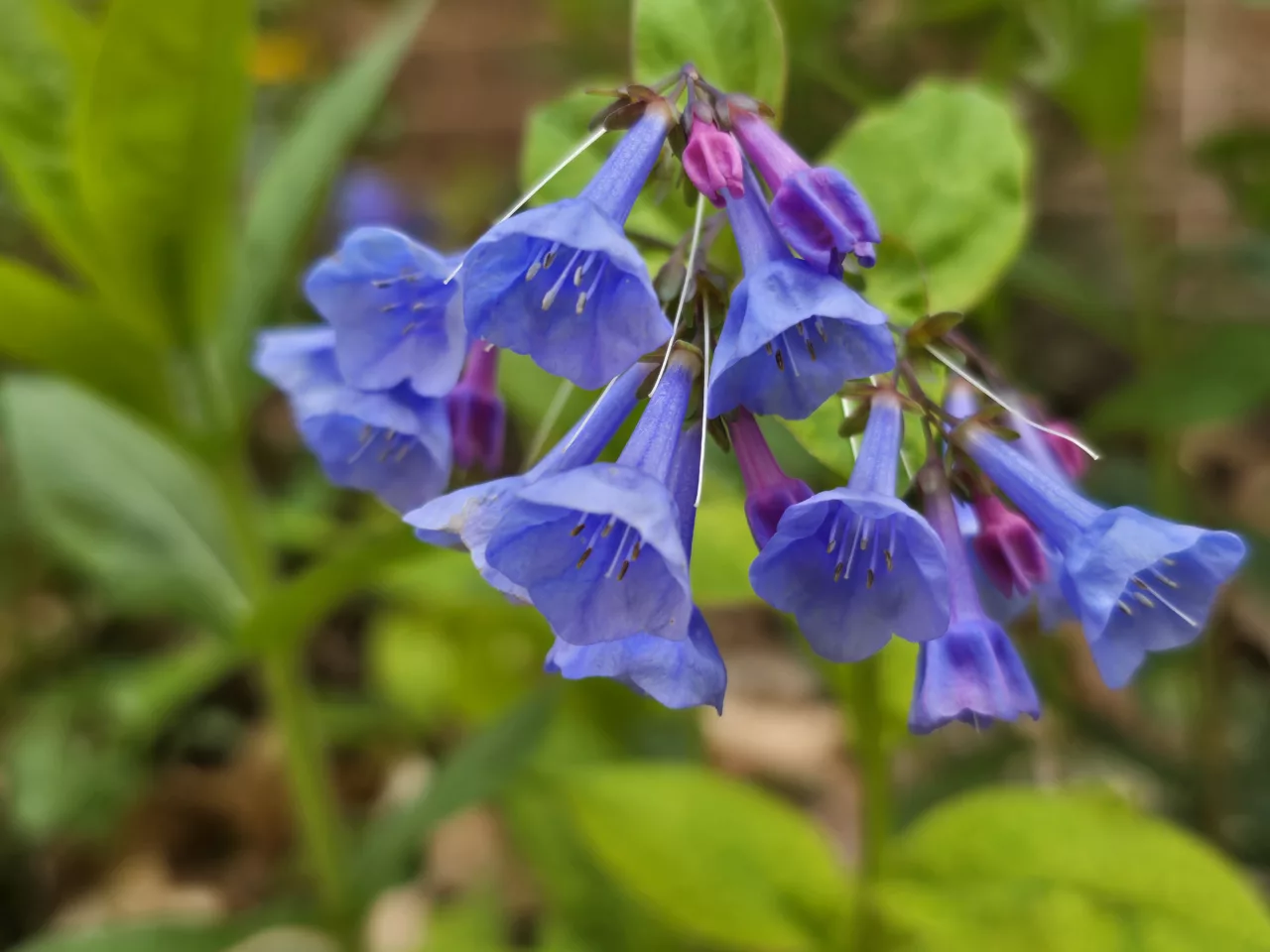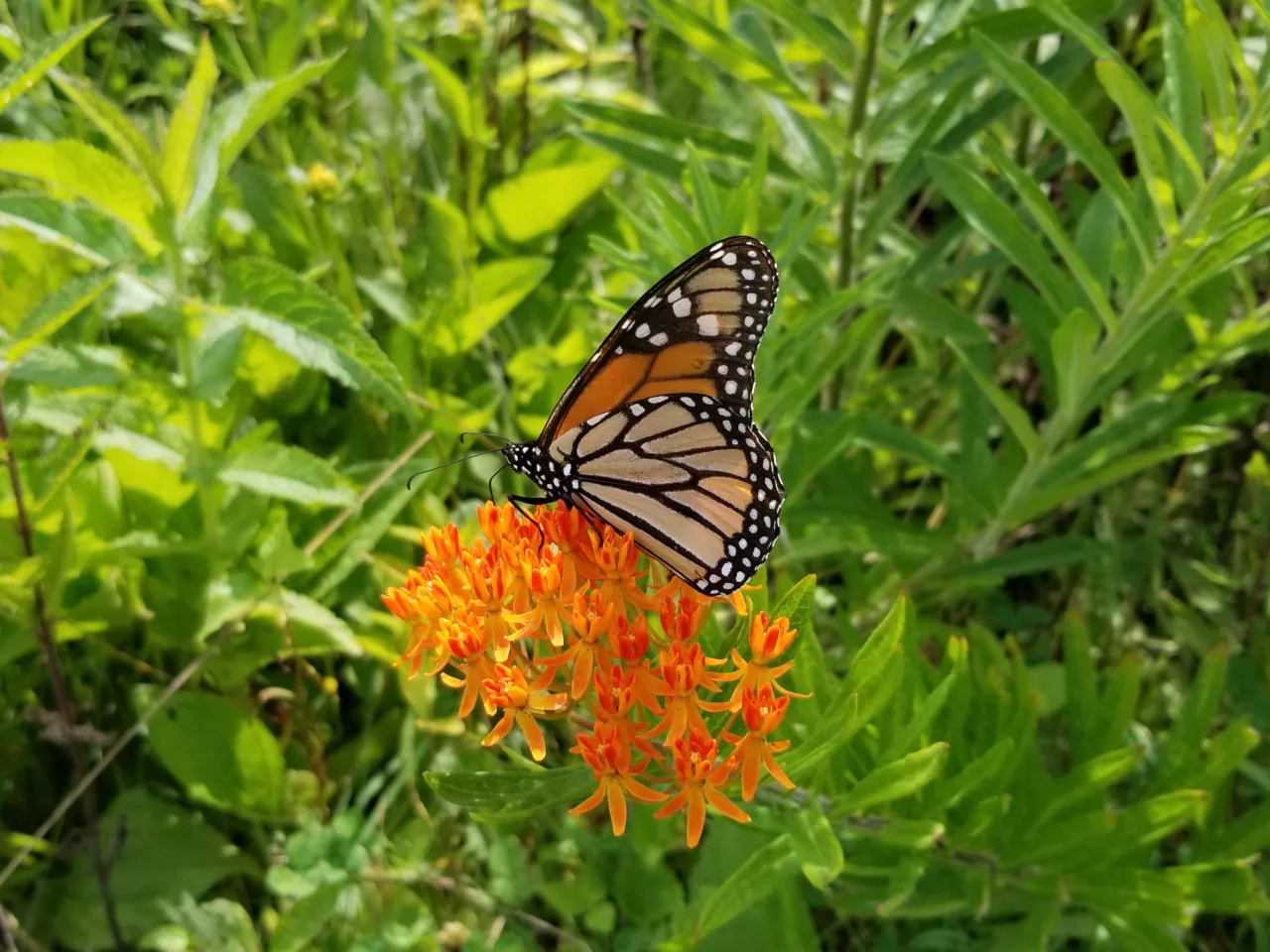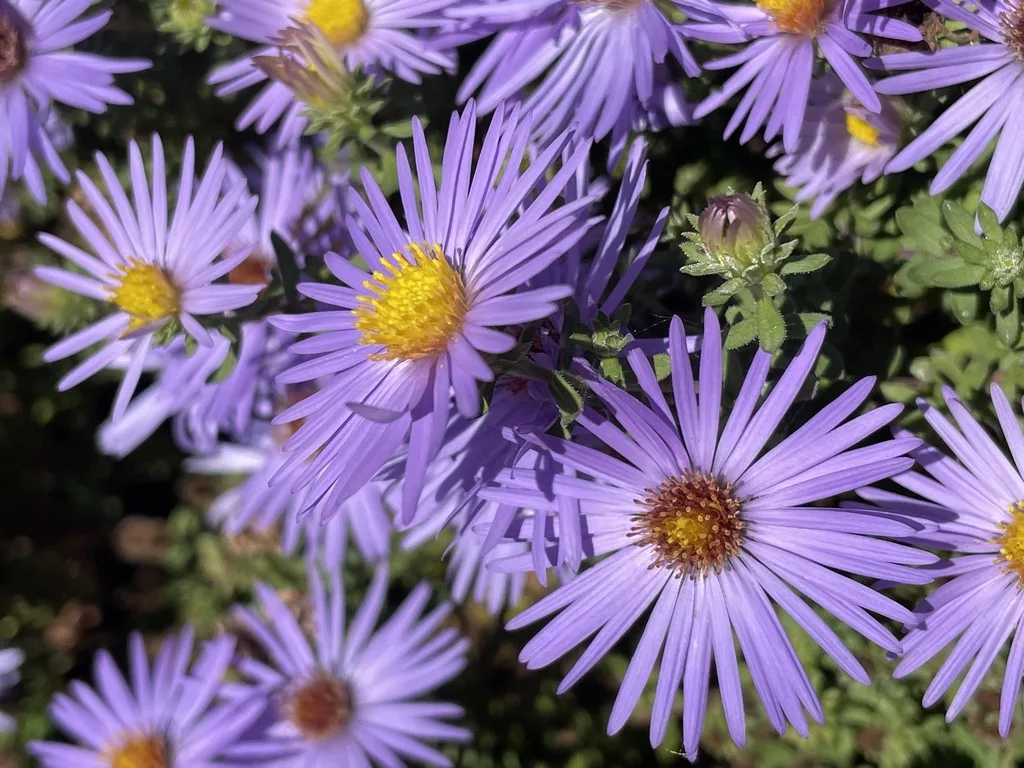While all native plants provide ecological benefit to pollinators, through strategic plant selection you can tailor your landscaped spaces to better meet the needs of native bee species and provide a constant supply of food for these hardworking pollinators from early spring until late fall.
Things to Know Before You Grow
- While there are over 20,000 known bee species in the world, 4,000 are native to the United States. Native bees come in a range of sizes, shapes, and colors, and vary in the flowers they visit and the nests they construct.
- Ecologically, bees can be divided into two groups—long and short-tongued—based on the relative length of the mouthpart segments within their tongues that are used to gather nectar. Some long-tongued bees like Apidae (bumble and carpenter bees), favor deep flowers with a longer throat, while short-tongued bees are more limited in their floral choices.
- While some bees utilize pollen from a wide variety of plants, others are specialists, meaning they forage and use pollen from only one or two families of flowering plants.
- When selecting plants, consider adding those with bright colors, as bees are particularly drawn to blue, purple, yellow and white.
- Incorporating various foliage textures and plant types adds visual interest to your garden while also supporting different species’ needs.
Seasonal Blooms with Maximum Bee Benefit
By cultivating a bee-friendly native plant garden, you are contributing to the health of our ecosystems by supporting declining bee populations—one flower at a time! Here are a few seasonal favorites to support these important pollinators.
Spring

Virginia Bluebells (Mertensia virginica)
• Bloom Time: April, May
• Light Requirements: Part sun, Shade
• Soil Moisture: Moderate, Moderately Wet
• Bloom color: Blue, Pink
• Benefits these Bees: Long-tongued bees primarily, including bumblebees, Anthophorid bees (Anthophora spp., Synhalonia spp.), and mason bees (Osmia spp.)
Wild Geranium (Geranium maculatum)
• Bloom Time: April, May
• Light Requirements: Full sun, Part sun
• Soil Moisture: Moderate
• Bloom color: Pink, Purple
• Benefits these Bees: Bumblebees, mason bees (Osmia spp.), cuckoo bees (Nomada spp.), long-horned bees (Synhalonia spp.), Halictid bees (Lasioglossum spp., etc.), Andrenid bees (Andrena spp.), and other bees. Andrenid bee, Andrena distans, is a specialist pollinator (oligolege) of Wild Geranium
Eastern Redbud (Cercis canadensis)
• Bloom Time: April, May
• Light Requirements: Full sun, Part sun
• Soil Moisture: Moderate
• Bloom color: Pink, Purple
• Benefits these Bees: Bumblebees, mason bees (Osmia spp.), cuckoo bees, long-horned bees, mining bee and sweat bees.
Summer

Pale Purple Coneflower (Echinacea pallida)
• Bloom Time: June, July
• Light Requirements: Full sun, Part sun
• Soil Moisture: Dry, Moderately Dry, Moderate
• Bloom color: Purple
• Benefits these Bees: Long-tongued bees such as bumblebees, Nomadine cuckoo bees, large carpenter bees, leaf-cutting bees, short-tongued green metallic bees and other Halictine bees
Spotted Bee Balm (Monarda punctata)
• Bloom Time: July, August, September
• Light Requirements: Full sun, Part sun
• Soil Moisture: Dry, Moderately Dry
• Bloom color: Purple
• Benefits these Bees: Bumblebees, Miner bees (Melissodes spp.), and Plasterer bees (Colletes spp.)
Butterfly Milkweed (Asclepias tuberosa)
• Bloom Time: June, July, August
• Light Requirements: Full sun, Part sun
• Soil Moisture: Dry, Moderately Dry, Moderate
• Bloom color: Orange, Red
• Benefits these Bees: Digger bees (Melissodes spp.), leaf-cutting bees (Megachile spp.), Halictid bees (including green metallic bees)
Highbush Blueberry (Vaccinium corymbosum)
• Bloom Time: March, April, May
• Light Requirements: Full sun, Part sun
• Soil Moisture: Moderately dry, Moderate, Moderately wet
• Bloom color: pink, white
• Benefits these Bees: Bumblebees Southeastern blueberry bees (Habropoda labriosa), large carpenter bees, cuckoo bees (Nomada spp.), plasterer bees (Colletes spp.), and Andrenid bees (Andrena spp.)
Fall

Aromatic Aster (Symphyotrichum oblongifolium)
• Bloom Time: August, September, October, November
• Light Requirements: Full sun
• Soil Moisture: Dry, Moderately Dry
• Bloom color: Purple
• Benefits these Bees: Long and short-tongued bees including bumblebees
Arrow-leaved Aster (Symphyotrichum sagittifolium)
• Bloom Time: August, September, October
• Light Requirements: Part sun
• Soil Moisture: Dry, Moderately Dry, Moderate
• Bloom color: White
• Benefits these Bees: Long-tongued bees, short-tongued bees
Showy Goldenrod (Solidago speciosa)
• Bloom Time: September, October, November
• Light Requirements: Full sun, Part sun
• Soil Moisture: Dry, Moderately Dry, Moderate
• Bloom color: Yellow
• Benefits these Bees: Primarily bumblebees
Rough-stemmed Goldenrod (Solidago rugosa)
• Bloom Time: August, September, October
• Light Requirements: Full sun, Part sun
• Soil Moisture: Moderately Wet, Wet
• Bloom color: Yellow
• Benefits these Bees: Small bees and bumblebees
Beyond the Blooms
Here are some additional ways to support these pollination powerhouses of our insect community.
- Safety in Numbers: Planting flowers in clusters makes it easier for bees to find food.
- Hydration Helps: Bees need water too. Try adding a water source or planting native plant varieties that hold water.
- Leave Some Areas Untouched: Ground-nesting bees require bare soil for nesting. Leave patches of soil uncovered or create small mounds.
- Provide Shelter: Provide winter nesting sites for solitary bees by skipping a fall cleanup. Leave hollow stemmed plants intact and some dead wood for them to access.
- Maintenance: Many bee populations have been severely reduced due to synthetic herbicide use. Remove weeds manually and choose organic mulches (such as leaves) to enrich the soil.
Header photo by Mark Gormel